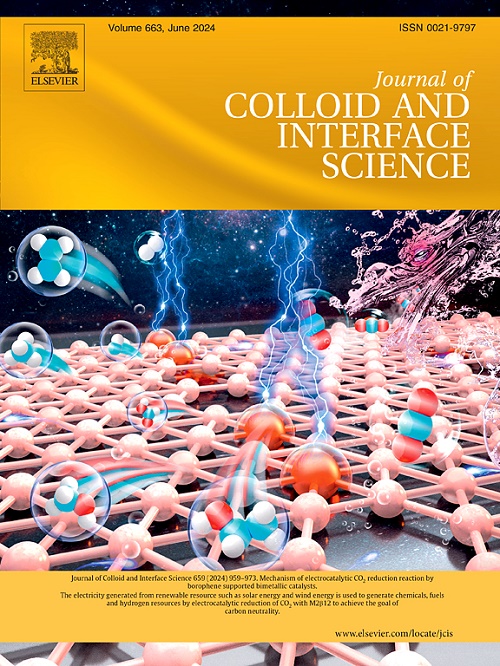High dielectric single-ion conducting interphase enables fast-charging lithium metal batteries
IF 9.4
1区 化学
Q1 CHEMISTRY, PHYSICAL
引用次数: 0
Abstract
The poor stability and slow lithium ion (Li+) transfer kinetics of solid electrolyte interphase (SEI) pose significant challenges to lithium (Li) metal batteries. Although various SEI-related strategies have been developed, the Li+ transport properties and uniform Li deposition still require substantial improvement for fast-charging applications. Herein, we introduce a dielectric, single-ion-conductive artificial SEI (DS-SEI) composed of lithiated Nafion and BaTiO3 (BTO) nanoceramics to address these issues. The lithiated Nafion stabilizes the Li anode with its elastic F-rich components and facilitates fast, single Li+ conduction through its anion-anchored structure. The high-dielectric BTO dynamically homogenizes the electric field (E-field) to promote uniform Li deposition, synergistically enhancing intrinsic single Li+ conductivity and Li+ desolvation/diffusion kinetics, thereby enabling fast charging of the Li anode. Consequently, the DS-SEI protected Li anode can cycle over 6800 h in a Li||Li cell at 10 mA cm−2/5 mAh cm−2, over 400 cycles in a 2.75 mAh cm−2 Li||LiFePO4 cell at 1C, with 83.0 % capacity retention at 6C (16.5 mA cm−2), and maintain stable cycling in a 5.62 mAh cm−2 Li||Li6PS5Cl|| LiNi0.8Co0.1Mn0.1O2 all solid-state cell. Our findings provide insights into the interfacial regulation of Li anode, paving the way for fast-charging Li metal batteries.

高介电性单离子导电中间相实现了锂金属电池的快速充电。
固态电解质相(SEI)稳定性差、锂离子(Li+)传输动力学缓慢,这给锂金属电池带来了巨大挑战。虽然已经开发出了各种与 SEI 相关的策略,但要实现快速充电应用,仍需大幅改善 Li+ 传输特性和锂的均匀沉积。为解决这些问题,我们在此介绍一种由锂化纳菲翁和 BaTiO3(BTO)纳米陶瓷组成的介电、单离子导电人工 SEI(DS-SEI)。锂化 Nafion 利用其富含 F 的弹性成分稳定锂阳极,并通过其阴离子锚定结构促进快速的单 Li+ 传导。高介电 BTO 动态均匀化电场(E-field),促进锂的均匀沉积,协同增强单锂+固有传导性和锂+解溶/扩散动力学,从而实现锂阳极的快速充电。因此,DS-SEI 保护的锂阳极可在 10 mA cm-2/5 mAh cm-2 下的锂电池中循环 6800 小时以上,在 1C 下的 2.75 mAh cm-2 Li||LiFePO4 电池中循环 400 次以上,在 6C 下(16.5 mA cm-2)容量保持率为 83.0%,并在 5.62 mAh cm-2 Li||Li6PS5Cl||LiNi0.8Co0.1Mn0.1O2 全固态电池中保持稳定循环。我们的发现为锂阳极的界面调控提供了见解,为锂金属电池的快速充电铺平了道路。
本文章由计算机程序翻译,如有差异,请以英文原文为准。
求助全文
约1分钟内获得全文
求助全文
来源期刊
CiteScore
16.10
自引率
7.10%
发文量
2568
审稿时长
2 months
期刊介绍:
The Journal of Colloid and Interface Science publishes original research findings on the fundamental principles of colloid and interface science, as well as innovative applications in various fields. The criteria for publication include impact, quality, novelty, and originality.
Emphasis:
The journal emphasizes fundamental scientific innovation within the following categories:
A.Colloidal Materials and Nanomaterials
B.Soft Colloidal and Self-Assembly Systems
C.Adsorption, Catalysis, and Electrochemistry
D.Interfacial Processes, Capillarity, and Wetting
E.Biomaterials and Nanomedicine
F.Energy Conversion and Storage, and Environmental Technologies

 求助内容:
求助内容: 应助结果提醒方式:
应助结果提醒方式:


